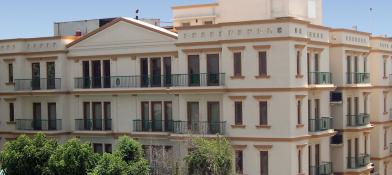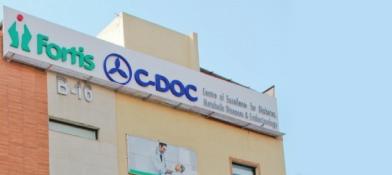Liver biopsy
Overview:
Liver biopsy is a gold standard technique to diagnose liver diseases or identify any damages. It is a safe, effective, and vital tool for planning effective treatment strategies for liver disorders. It is a minor procedure which includes removal of small tissue from the liver using a needle. Later, this tissue is sent to the lab to be observed under a microscope by a pathologist. After observing under the microscope, pathologists give a diagnosis of the type of liver disorder.
The technique of biopsy:
Liver biopsy is done in four ways. These include percutaneous methods, transvenous methods, laparoscopic methods, and plugged biopsy.
- The percutaneous method can be done in 3 techniques: the palpation method, the image-guided method, and the real-time image-guided method.
- In the palpation method, HCPs use their hands to tap and feel the liver. They find the best spot to take the sample tissue.
- In the image-guided method, ultrasound guides a needle to the liver. This increases the accuracy of the procedure.
- The transvenous method is employed in individuals who have a risk with other methods. In this method, a needle is inserted into a vein from the neck and is guided into the liver.
- Laparoscopic liver biopsy is another technique that is done during surgery or as a standalone procedure. Minor cuts or incisions are made, and a camera and tools are inserted through these cuts. This allows the HCPs to visualize the liver and take necessary samples from the target areas.
- Plugged biopsy is commonly used when there is an increased risk of bleeding. After retrieving the sample, the needle track is plugged in to reduce bleeding complications.
Indications:
A liver biopsy is indicated to diagnose, assess prognosis, and plan treatment for various liver diseases that cannot be confirmed by physical examination, blood tests, or imaging studies. This is also indicated when an irregular structure or tumor is seen in imaging studies to determine the staging of an established liver disease, to plan treatment for a liver disease, and to know the prognosis of the treatment. This is also done to monitor the liver after a liver transplant.
The various liver conditions for which a biopsy is done include:
- Nonalcoholic fatty liver disease.
- Liver cirrhosis.
- Chronic hepatitis.
- Storage diseases of the liver.
- Autoimmune diseases of the liver.
- Biliary and sclerosing cholangitis.
- Hemochromatosis.
- Wilson’s diseases of the liver.
Liver biopsy in these conditions helps to check the prognosis, determine the level of fibrosis, score the fibrosis, and determine the prognosis.
Contraindications:
There are certain absolute contraindications and specific relative contraindications. Absolute contraindications include uncooperative patients and patients with increased risk of bleeding, in patients with Internationalized normalized ratio (INR) > 1.5, platelet counts less than 60000, and vascular tumors of the liver. Sometimes, parameters must be corrected, or another type of biopsy can be done in patients with abnormal INR or platelets. Abnormal fluid accumulation in the body, called ascites and morbid obesity, are relative contraindications for a liver biopsy.
Before the procedure:
Before undergoing a liver biopsy, an individual should give complete information about medical history, medications being used like aspirin and NSAIDs, the presence of any life-threatening conditions, and any past surgical treatments. Certain blood tests, urine tests, and imaging studies might be done to understand the current physical condition. Diet might be changed; blood thinner medications have to be stopped, and others like antibiotics may be prescribed. The biopsy will be done on an empty stomach. Hence, it is necessary to refrain from eating anything 8-12 hours before surgery.
During the procedure:
A biopsy will be done in a hospital under anesthesia. Sedatives will be given to relax, and the biopsy site will be thoroughly cleaned with an antiseptic. An individual is made to lie comfortably on their back with the right hand raised over the head. A small cut or incision is made on the bottom of the ribcage on the right side. If it is a percutaneous liver biopsy, a biopsy needle is inserted, and a sample is retrieved.
In the case of a transjugular biopsy, a contrast dye is administered, followed by the capture of a sequence of x-ray images. Based on the presence of dye in the hepatic vein, a biopsy needle is passed from the veins in the neck, and a sample is taken. Laparoscopic biopsy is done under general anesthesia. Video images are used to guide the biopsy needle in obtaining a liver sample.
After the procedure:
An individual will be in a recovery room and constantly monitored for infections or complications until the vitals are stabilized. One needs to rest for about 2 to 4 hours after the biopsy. Medications like painkillers and antibiotics are indicated for pain and swelling and to wear off any infections. It is recommended to avoid heavy weights lifting, and one can resume daily activities in a week.
Risks and complications:
There are certain risks and complications associated with biopsy, including pain, bleeding from the biopsy site, infections, and accidental injury to internal organs. The other complications are based on the type of liver biopsy. Trans jugular biopsies are associated with certain risks like blood collection in the neck, injuries to the facial nerves, and hoarseness of the voice. Sometimes, bleeding can be fatal due to injury to the liver or blood vessels, causing severe pain in the abdomen and a rapid drop in hemoglobin and blood pressure levels. Hematomas can also develop. Hemobilia, a condition that presents internal bleeding, pain, and jaundice, is one of the complications that can develop after a biopsy.
Conclusion:
A liver biopsy is an essential diagnostic tool for various liver disorders and gives valuable information about the nature and severity of liver conditions. Healthcare professionals use this test to diagnose liver diseases based on individual patient needs and circumstances.






























